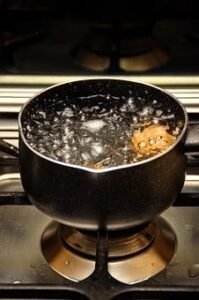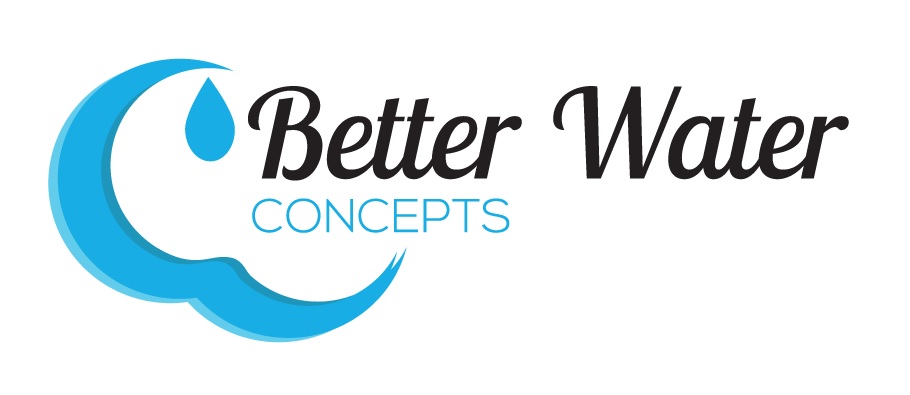We're an affiliate
We hope you love the products we recommend! Just so you know, we may collect a share of sales or other compensation from the links on this page. Thank you if you use our links, we really appreciate it!
Does Boiling Water Remove Fluoride?
People concerned about fluoride in their drinking water sometimes ask: Does boiling water remove fluoride?
The answer: No.

Boiling is the most common method used for water purification. Most people assume they can remove every impurity in water by boiling it.
But this is not true.
Boiling can’t remove every impurity in water, fluoride being one of them. Rather than removing fluoride, boiling actually increases its concentration. This is simply because by boiling, some water escapes as steam, leaving the same amount of fluoride and less water.
All Natural, Untreated Water has some Fluoride
All water from either lakes, rivers, streams or underground wells have some natural fluoride. Some underground water contains fluoride levels that are unsafe. Most people don’t have a problem with safe levels of natural fluoride.
Many people do object to the practice of adding fluoride to their drinking water. Fluoride contamination is a significant problem facing many people all over the world. Fluoride, in the right amount, is beneficial to the dental health of children and adults.
However, too much fluoride is detrimental to health. There is fluoride in toothpaste, mouthwash and some dentists even provide fluoride drops for their young patients. Many people find it necessary to remove it from the water they drink.
There are many fluoride removal methods. It may be hard to determine the most effective one for you.
In this guide, we will first look at a brief history of water fluoridation, then give you the most effective fluoride removal methods you can use today.
A Brief History of Water Fluoridation
The effect of fluoride in water for consumption was not known until the 20th century. It all started in 1901 when Dr. Frederick S. McKay, a dentist in Colorado, discovered mottled enamel in his patients’ teeth. Through research and investigation, he concluded that an agent in the water his patients were drinking caused the mottling.
In the year 1909, Dr. F. L. Robertson, also a dentist based in Bauxite, discovered the same condition on his patients’ teeth. After field investigations, the well that was being used by the public was closed as they concluded it the water could have been the cause. This was in the year 1927.
In 1930 H. V. Churchill, a chemist working with Aluminum Company of America, tested the water in the abandoned well and found out that it had a high fluoride level. On hearing this, Dr. Frederick S. McKay sent a sample of water used by his patients who had the mottled enamel condition. It turned out that those samples also had a level of fluoride.
Too Many People Wanting to do Good
This led to the formation of the Dental Hygiene Unit at the National Institute of Health in 1931. This institution investigated the relationship between mottled enamel, fluorosis and fluoride. It also involved other countries in the investigation.
The Dean at Dental Hygiene Unit observed a benefit of fluoride. In the right concentration, fluoride prevented dental caries, or cavities, in young children. After considerable study, in 1962, the United States recommended the concentration of fluoride in water to be 1.0-1.2 ppm.
Many water utilities began adding fluoride to their drinking water to reach that recommended level. A practice that continues today. In the United States, 67% of the population receives water with fluoride at or above recommended levels.
4 Best Methods to Remove Fluoride
The following fluoride removal methods are effective and easy to use.
• Activated alumina adsorption method
Activated alumina removes fluoride by adsorption. Fluoride-contaminated water passes through the activated alumina. The fluoride ions attach to the activated alumina, lowering fluoride levels.
This process works best with low fluoride levels like that found in drinking water. The most effective pH range for activated alumina is between pH 5.5-6.5. However, it still works at higher pH ranges as well.
• Distillation
Distillation is a fluoride removal technique that uses the difference in boiling points of water and fluoride.
A distiller consists of an enclosed container, a source of heat, a condenser tube and a receiving container. The first container is filled with fluoride contaminated water. Heat is applied to the first container.
On heating, pure water evaporates and escapes as water vapor or steam. It then travels through the tube to the second container. The tube cools the steam and turns it back into water. Only now the water is pure.
Distillation is a batch process. Distillers come in a variety of sizes for home use, ranging from 5 to 12 gallons per day. Counter-top models don’t take up much space and can produce a gallon of pure water every 4-5 hours.
• Reverse osmosis
In this process, fluoride is removed by forcing water through a semipermeable membrane. Fluoride is too large to pass through the membrane.
Reverse osmosis can remove any other impurity as well. It is not the most efficient means of removing fluoride. It takes a minimum of two gallons of water to make one gallon of purified water. However, unlike distillation, reverse osmosis is a continuous process.
• Activated Carbon Filter
Activated carbon can remove up to 70% of the fluoride in the water. It uses the same adsorption method as activated alumina.
A filter with both activated carbon and activated alumina will remove nearly all the fluoride.
Other Factors to Consider for Fluoride Removal
Now that you know the best techniques to remove fluoride from water, here are some factors to consider when settling for one:
• Cost – This is the major factor whether you want one for domestic or industrial use. Consider the method that makes sense for your budget.
• Water taste – As obvious as it is, if you are purifying your water for drinking, you need to choose a technique that will produce the best tasting water.
• Ease of use – If you need one for domestic use, choose the easiest method.
Closing Thoughts on Removing Fluoride
As you have seen from the above discussion, boiling water cannot remove fluoride from water.
So, you should not use it as your purification method. The above techniques are among the easiest and the most efficient ones available currently.
Just pick one depending on your requirements, try it out and you will enjoy fluoride-free water at all times!
